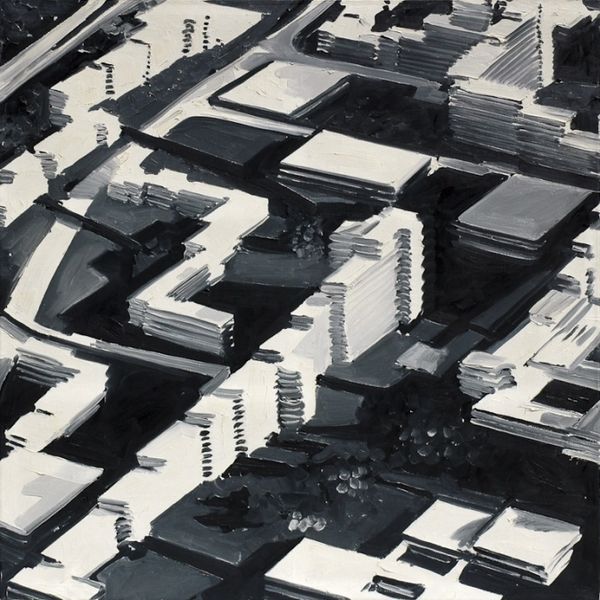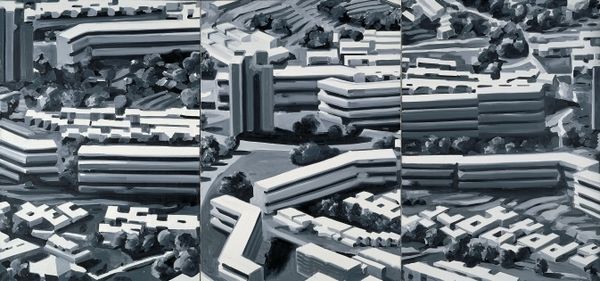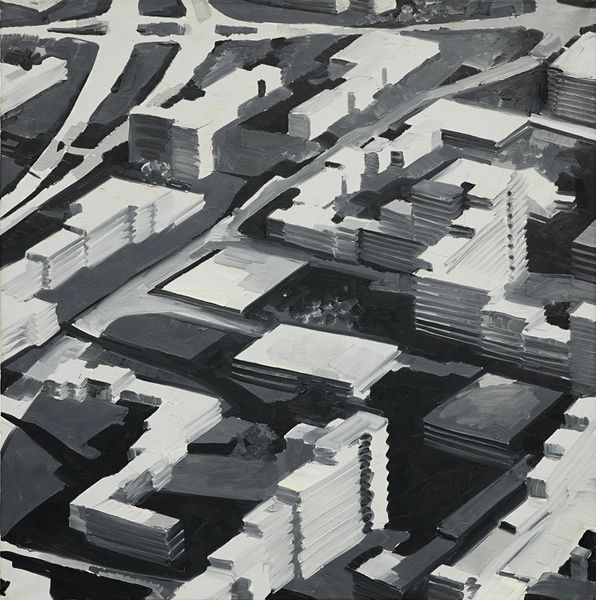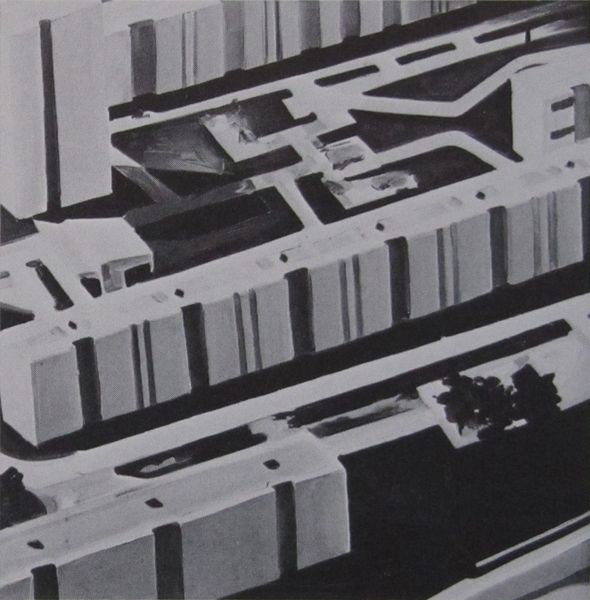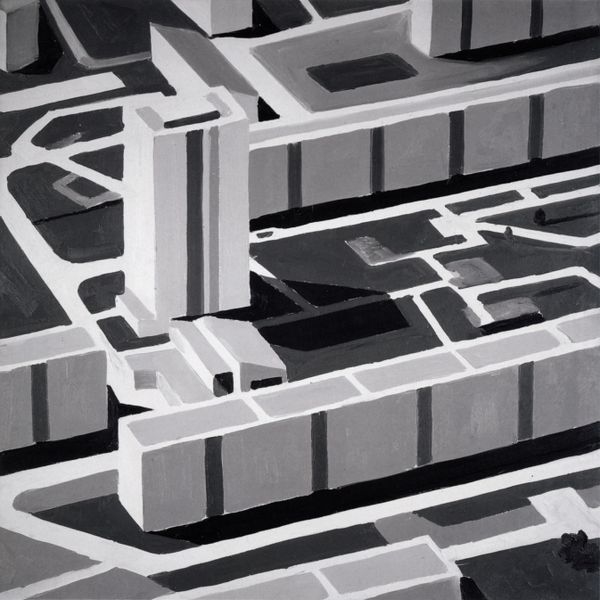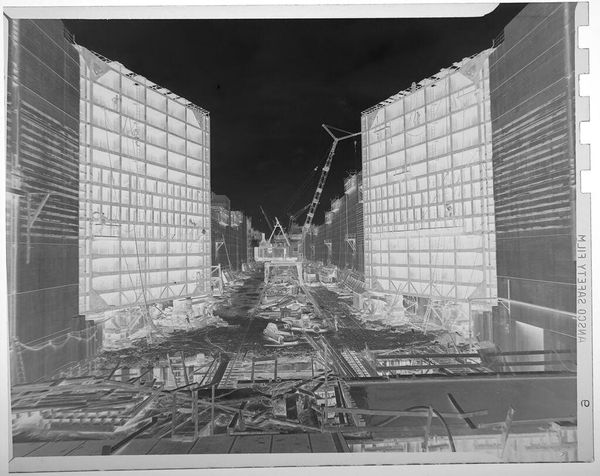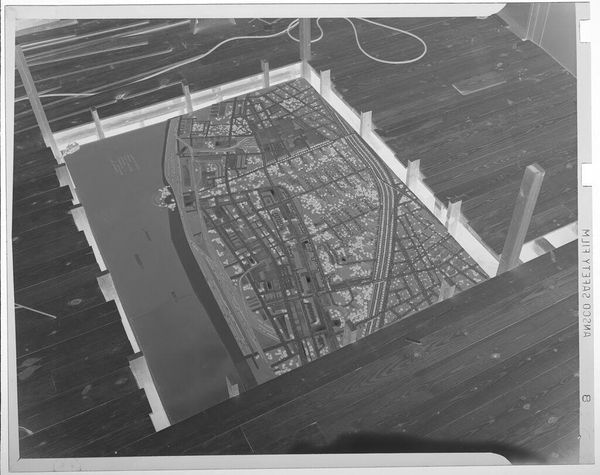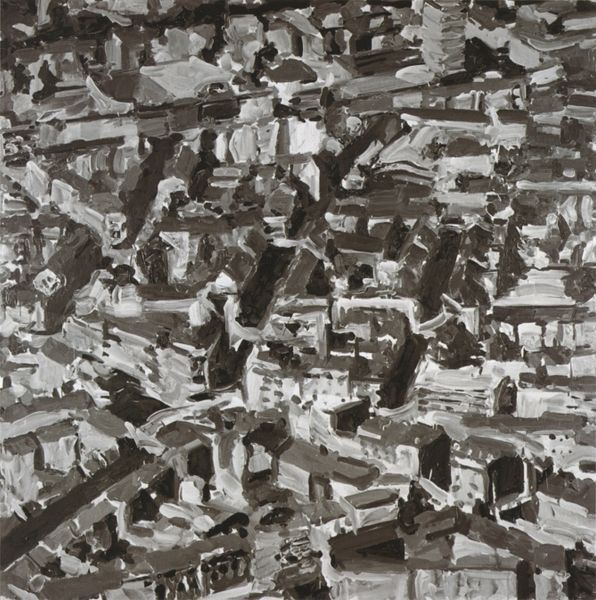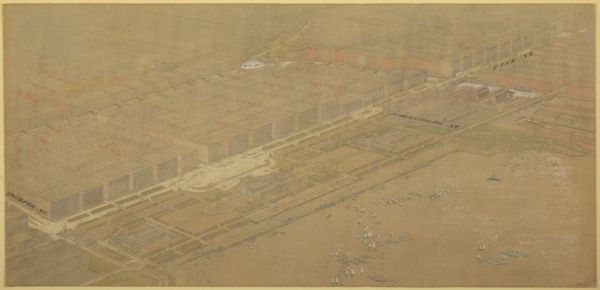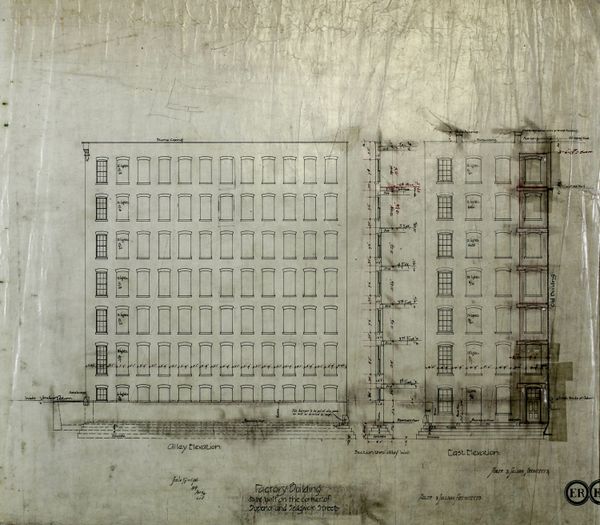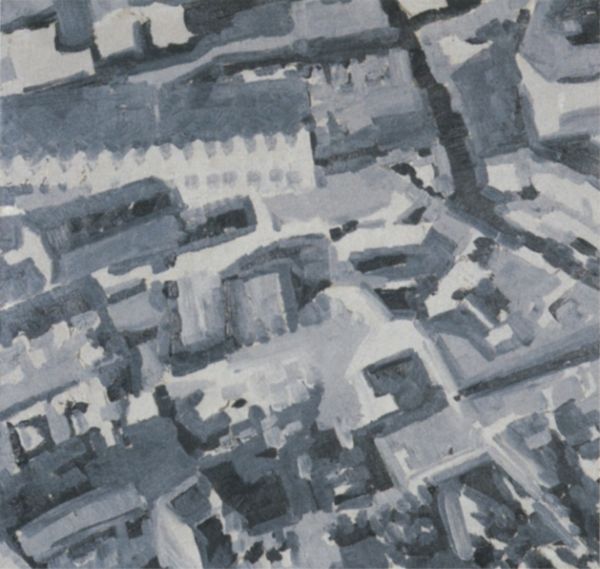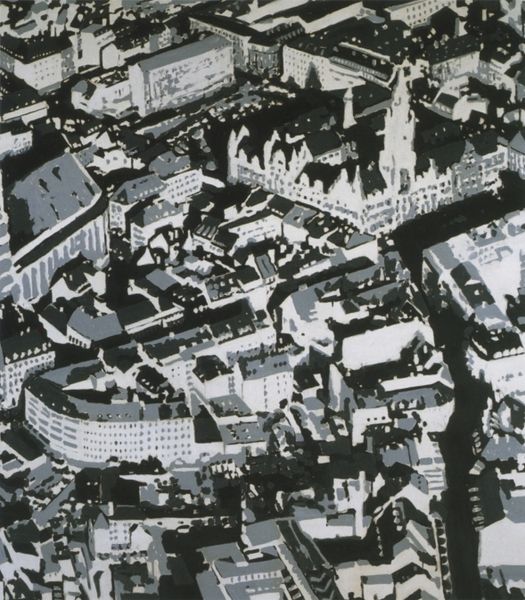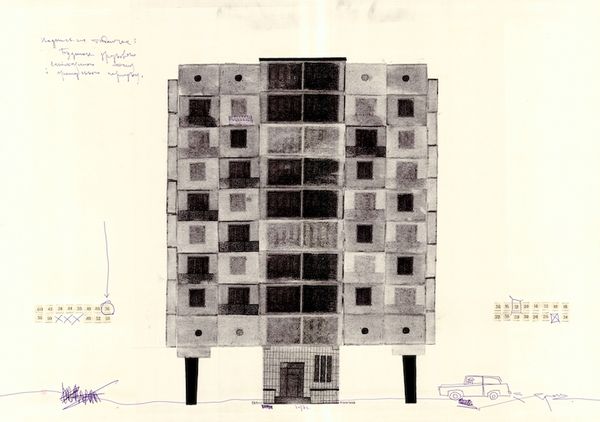
#
capitalist-realism
Copyright: 2019 Gerhard Richter - All Rights Reserved
Curator: Looking at Gerhard Richter's "Townscape Ha," painted in 1968, I am immediately struck by its bleak, almost dystopian feel. It's a cityscape rendered in shades of grey, black and white, from what appears to be a high-angle perspective. What are your first impressions? Editor: The composition is remarkably ordered, even regimented. Note the sharp lines and geometric shapes dominating the architectural forms. There's a visual coolness, perhaps detachment, conveyed through the limited palette and precise execution. Curator: Richter made this after seeing aerial photos of the rebuilt areas of German cities. He painted these in 1968 which places them after the German revolt of 1968, with architecture that may feel devoid of expression of spirit of hope during that revolutionary period in social justice in Western history. Editor: I would say it seems quite precise. Let us note how he translates the aerial perspective to canvas, focusing on pattern and repetition. It seems that each individual space that might represent a person's home is homogenized by its architecture, each space indistinguishable from the others. Is there an underlying statement about postwar urban planning here? Curator: Absolutely. It speaks volumes about the societal shifts and the often alienating impact of rapid urbanization following the devastation of World War II. The high angle feels distant to its population, which makes its inhabitants small in comparison to its scope and uniformity. These blocks could easily represent public housing too. Editor: Tell me more about this homogenization? It almost borders abstraction with how he highlights tone versus detailed representational specificity. We might find interest with how he constructs and deconstructs vision using a very calculated eye, and limited tonal arrangement of light, medium and dark. Curator: The fact that these areas in cities have undergone this uniformity also speaks to the lack of input from minority, or socioeconomically challenged areas during construction periods, speaking to a political issue surrounding accessibility and the democratic power to voice. This places more power in corporations or government control in restructuring. Editor: You’re right, if the grid represents power dynamics, then one finds that architecture holds cultural clues that may tell a history to political events. We can trace architectural language to cultural moments, which also affects the artist's use of paint on canvas. This work definitely allows one to rethink their views on built environments in social movements.
Comments
No comments
Be the first to comment and join the conversation on the ultimate creative platform.
